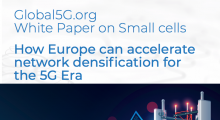Public Safety: Technical Viewpoints
PSCE, the Public Safety Communication Europe is an independent forum where user organisations, industry and research come together to discuss and exchange ideas and best practices, develop roadmaps and improve the future of public safety communications.
PSCE takes part in 3GPP SA1 (Services) to define service and feature requirements and SA6 (mission-critical applications) for the definition, evolution and maintenance of technical specifications for application layer functional elements and interfaces supporting critical communications, e.g. Mission Critical Push to Talk (MCPTT), MCData and MCVideo functions, features and capabilities, thereby uniting the voices of European organisations responsible for public protection and disaster relief (PPDR).
PSCE is a 3GPP MRP.
Technical viewpoints from Dr David Lund, President of PSCE (July 2019).
PSCE works to foster excellence in the development and use of public safety communication and information management systems by consensus building. Public safety end-users, industry and researchers are the main stakeholder groups for bringing and using new and improved communication applications, services, devices and networks. Collaboration across these groups is vital for driving innovation and uptake.
A key driver for PSCE as a 3GPP MRP (Market Representation Partner) is the European Horizon 2020 initiative, Broadway, which is driving pan-EU mobile broadband for public safety to improve collaboration between first responders from different agencies and countries and enable the mobility of responders between countries.
Saving lives - end-user roles and responsibilities
Managing strategy; tactical planning; running operations; managing and improving the effectiveness of the public communication processes.
Role of Industry
Developing and supplying communication applications, services, devices and networks.
Role of researchers
Conducting R&D for novel improvements for public safety communication and PPDR; investigating legal and social aspects of public safety processes and technology.
3 Common Challenges for Europe
-
Minimal interoperability as a limiting factor for Pan-European response collaboration.
-
Old technology restricted to voice and short data only (2G equivalent).
-
Vendor-locked.
Requirements for Pan-EU Operational Mobility
-
Application ecosystem.
-
Device ecosystem.
-
Innovation ecosystem.
-
Architecture, availability and security.
-
Standardised solutions.
-
Technical validation.
-
Practitioner evaluation and acceptance.
5G must meet requirements for augmented reality (AR), IoT devices, smart firefighters, future paramedic technology, future policy. Technology and information exchange for the good guys must be more capable and secure than the bad guys and it must continue to work in harsh and compromised situations.
PSCE white papers and publications for further reading
September 2019: IoT for Public Safety
May 2019: Implementing Public Warning System
January 2019: Semantic Interoperability
December 2018: When will 5G be ready for PPDR
All publications are available on https://www.psc-europe.eu/library/white-papers.html



